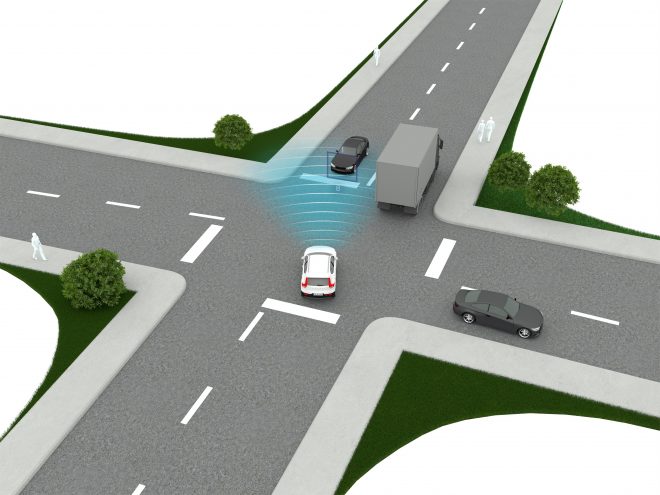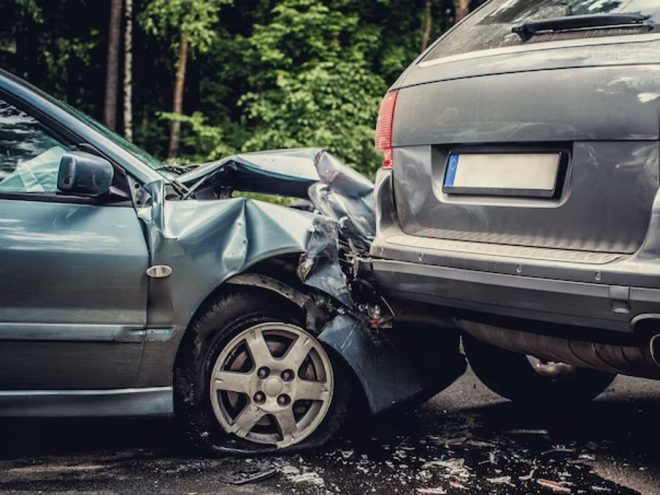
What Human Factors Can Cause a Car Crash?
While many car crashes occur due to a perfectly unfortunate series of unavoidable events, other collisions are caused or influenced by the (in)actions of motorists on the road. Poor decision making, operating a vehicle while impaired, or driving while tired are all traits that can easily lead to a serious crash. In this article, we discuss some of the human factors most commonly responsible for motor vehicle wrecks.
Distracted Driving
Driving while distracted is incredibly dangerous, both for the person behind the wheel and other people on and around the roadway. According to the National Highway Traffic Safety Administration, distracted driving claimed 3,142 lives in 2020, the most recent year for which there is a full database of U.S. crash statistics. While most people automatically think of drivers talking on their phone or texting while behind the wheel when they hear the words “distracted driving,” there can be many other causes of crashes, including:
- Arguing with a passenger
- Reaching down to grab something from your console or glovebox
- Eating or drinking
- Applying makeup
- Adjusting the vehicle’s climate controls or stereo volume
Anything that causes a driver to take their eyes and focus away from the road while they’re behind the wheel can be considered distracted driving. While it may not seem like a big deal to look away from the road for a second, a car can travel the length of a football field in approximately five seconds at a speed of 55 miles per hour (mph). When a vehicle is traveling at such a speed without the driver firmly in control, a preventable tragedy can strike.
Impaired Driving
Every time a person under the influence of drugs or alcohol makes the conscious choice to get behind the wheel of a car, they put their own life and the lives of other drivers at risk. Drugs and alcohol are capable of negatively impacting a driver’s decision making, reaction time, and motor control. Mixing drugs and alcohol can create an even more potent state of impairment, substantially increasing the risk of a dangerous wreck.
Even prescription medications can impact a driver’s ability to safely control their vehicle and navigate the roadway. Drivers should always know the possible side effects of any medications they are on, such as dizziness, drowsiness, or blurred vision. When in doubt, staying off the road after a night out is usually the best option. As The Entrekin Law Firm notes, “all drunk driving accidents are preventable.”
Unsafe Speed
When a driver is speeding, they give themselves less time to react to unexpected hazards or shifting road conditions. A speeding car may, for example, be unable to come to a stop quickly enough to avoid striking another vehicle that pulls in front of it abruptly, even if the motorist attempts to brake in time. Speeding may also reduce the effectiveness of median dividers, guardrails, and other road safety structures designed to protect motorists and passengers when a collision occurs.
According to the National Safety Council (NSC), speeding was a factor in 29% of 2020 traffic fatalities. In total, 11,258 people lost their lives in a speeding-related crash throughout the year, which translates to approximately 30 people per day. While not all speed-related collisions are preventable, many accidents can be avoided or mitigated if the driver(s) involved are operating their vehicles safely.
Driving While Fatigued
Compared to the other items on this list, fatigued driving may not seem as dangerous of a decision. However, severe fatigue can actually cause impairment on a similar level as a driver that has been drinking. Truck drivers and other people that work long shifts are particularly at risk of increased fatigue. Some medications and sleep disorders may also cause a dangerous level of drowsiness. Drivers suffering from fatigue may:
- Fall asleep while driving
- Make unwise decisions
- Drift across lane markers
- React more slowly to hazards
Crashes involving fatigued or drowsy drivers frequently occur late at night, often between the hours of midnight and 6:00 am. This type of collision frequently occurs on highways or rural roadways.
Making Mistakes
Something as simple as a single error in judgment can lead to a catastrophic collision. A motorist may be driving too fast for weather conditions, run a red light, or miscalculate how sharp a turn is. When a driver operates their vehicle in an unpredictable manner or makes a mistake, other motorists may not react in time to avoid a wreck and someone like these Detroit car accident attorneys coming to the rescue for victims and getting them the compensation they deserve as a result of the accident. While everyone makes mistakes from time to time, it’s essential to adhere to one’s local, state, and federal driving laws as closely as possible.
Aggressive or Dangerous Driving
Aggressive driving puts lives at risk by substantially increasing the odds of a serious crash. People may be tempted to drive dangerously for a number of reasons, from running late to an appointment to road rage. Aggressive driving can include behaviors such as:
- Tailgating
- Driving too fast for conditions
- Frequent lane changing or unsafe merges
- Honking at other drivers unnecessarily
- Yelling at or threatening other drivers
If you experience an altercation with an aggressive driver or become involved in a road rage incident, do your best to deescalate the situation without putting yourself at risk. Do not attempt to pursue the aggressive driver. If you feel that you or other motorists are in danger, call 911 to report the aggressive driver to law enforcement.
Age as a Crash Factor
A driver’s age can be a substantial and often-overlooked crash factor. Both young and older drivers may be more likely to get into a collision, though for different reasons.
Young Drivers
When a person is learning to drive or has just recently earned their driver’s license, they are more likely to get into a wreck. Young drivers may not be confident in their own skills or may not obey the rules of the road, such as by making an unsafe lane change or neglecting to use turn signals. They may also be overconfident and more likely to engage in unsafe behavior. The Centers for Disease Control and Prevention notes that teen drivers aged 16-19 have a fatal crash rate almost three times as high as drivers 20 and older.
Older Drivers
While young drivers may be more likely to get into a wreck due to inexperience, older drivers may engage in dangerous behaviors that increase the odds of a crash occurring. Elderly motorists may make improper lane changes, misjudge distances, drive too slowly, run a red light, or fail to yield. Drivers aged seventy or older have higher fatal crash rates per mile traveled than middle-aged motorists.
Protecting Yourself from Motor Vehicle Collisions
By practicing defensive driving every time you get behind the wheel of your car, you substantially reduce your chances of getting into a crash. Be sure to keep your attention focused on the road, stay alert for potential hazards, and attempt to predict the behaviors of the motorists around you. We hope this article helps you and your loved ones enjoy safe travels on your next roadtrip!









